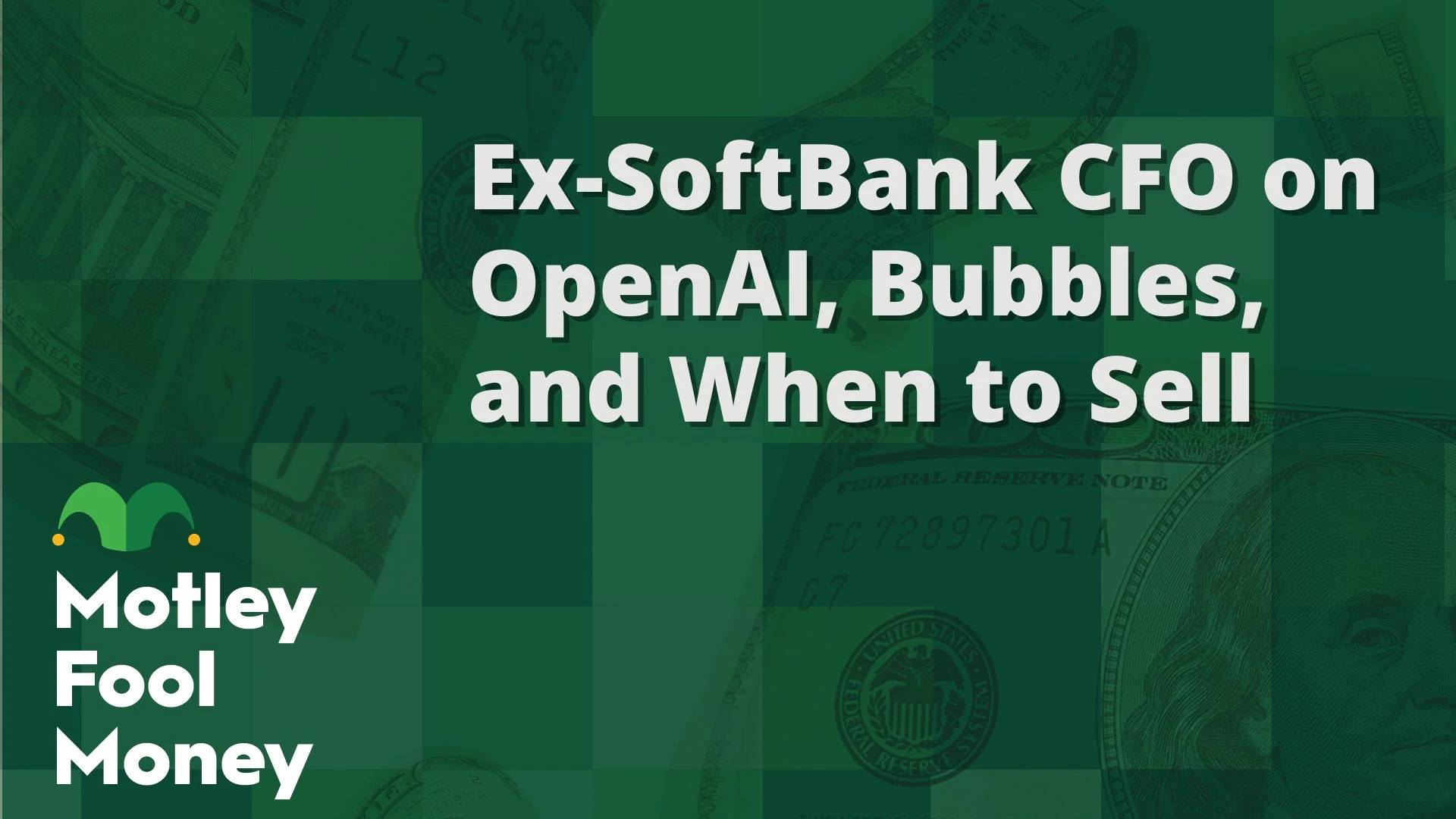The value of AI semiconductor stocks has experienced a significant decline since their peak in July. This raises the question: is this decline a buying opportunity, or is it indicative of a deflating AI bubble?
There are many who question the long-term utility of AI technology and whether the high levels of spending can be maintained, especially if the economy experiences a downturn.
Despite these concerns, technology executives have not shown any signs of slowing down AI investments. In fact, this week, Oracle’s founder and Chairman, Larry Ellison, provided an exceptionally optimistic forecast for AI spending for the remainder of this decade, which should reassure long-term investors in the tech sector.
Contents
Why Have AI Semiconductor Stocks Declined?
The sharp drop in AI semiconductor stocks, such as Nvidia (down 8.15%), Broadcom (down 6.79%), and Advanced Micro Devices (down 4.92%), since the summer highs might be surprising to some. These stocks are now trading 25% to 41% below their record highs in July.
Several factors could explain this decline, even though each company is currently experiencing strong growth in AI-related areas.
Firstly, after reaching a low point in late 2022, semiconductor stocks have seen significant gains over the past 18 months. This has made some investors wary of having too much concentration in their portfolios, prompting them to take profits or rebalance.
Additionally, concerns about a potential recession emerged after a disappointing July jobs report, despite the Federal Reserve maintaining high interest rates that month. Although the August jobs report showed a sequential increase, it still fell short of expectations, causing some investors to worry about the economic outlook.
Semiconductor stocks, despite their promising long-term growth prospects, are traditionally viewed as cyclical. This may have prompted older investors nearing retirement or short-term traders who cannot afford significant short-term losses to cash in their profits.
Lastly, there is skepticism regarding the sustainability of the substantial revenue gains seen by companies like Nvidia. While the Magnificent Seven stocks have indicated plans to continue spending into next year, some analysts are concerned that their short-term revenue growth and profits may not align with the level of spending. If AI investments don’t result in meaningful growth for these large tech companies, justifying such spending on AI infrastructure could become challenging for their CEOs.
“An Ongoing Battle for Technical Supremacy”
On Monday evening, Oracle, a leader in databases and cloud services, released its first fiscal quarter earnings. The results and guidance were impressive, leading to a double-digit increase in the stock price the following day.
Given the current focus on AI, management was questioned during the analyst conference call about whether the extensive spending on AI model training was a bubble that inflated chip demand. A skeptical analyst suggested that once AI models are trained, the majority of spending would cease.
Larry Ellison countered this viewpoint with a compelling analogy:
“Many people believe that once you send a child to college, the training is complete. After four years, the child can start working. But that’s not the case. The race to develop better neural networks is ongoing.”
Ellison emphasized that investments in AI are expected to grow for at least the next five, if not ten years. This is largely due to a few companies capable of developing the largest frontier models, which are financially equipped to maintain their market positions. Ellison referred to this as an “ongoing battle for technical supremacy,” likely to involve a handful of companies and possibly one nation-state over the coming decade.

Ellison noted that the entry cost for a frontier model is likely around $100 billion. Even the increased capital expenditure plans of the Mag 7 stocks for the year don’t match this figure. For example, Meta Platforms, which is developing its own Llama frontier models, recently raised its capital expenditures mainly for AI-related data center infrastructure to between $37 billion and $40 billion for 2024. Microsoft, which has invested in OpenAI and has an exclusive cloud partnership with them, spent $19 billion on capital expenditures last quarter, including finance leases, with only about half allocated for data center infrastructure.
Ellison also highlighted that alongside the large frontier models, numerous smaller, specialized models will be developed across various fields. He cited the medical industry as an example, where millions of CAT scans, biopsies, or blood samples could be analyzed by industry-specific AI models to detect cancer. These models will complement the larger general models. Similarly, sovereign nations may develop their own AI systems.
Not Sold Separately
Ellison emphasized that AI is not a standalone product sold to customers; rather, it is integrated into Oracle’s existing offerings, such as database management and automated records retrieval in Oracle’s Cerner hospital software.
“It’s not something you sell separately. It’s the diagnostic system, the electronic health record system, the pharmacy system, the prescription system, the user authentication, the log-in system—it’s all AI. Some applications companies may claim to have AI agents they charge for separately, but our applications will primarily be AI-driven. How do you charge separately for everything?”
This is a crucial point. While some investors express concerns about the lack of specific AI-related growth, technology companies must continue investing in AI to keep their products competitive. Failure to do so could pose a significant risk to current and future revenues, ensuring high AI spending for the foreseeable future.
“Enormous” and “Immense” Demand
Oracle’s CEO, Safra Catz, added that the company is witnessing “enormous” and “immense” demand for its cloud infrastructure tailored for AI processing, aligning with reports from other tech firms during this earnings season.
Despite these positive insights, AI-focused chip stocks are experiencing a notable pullback. This suggests that the current downturn in AI stocks is likely a temporary dip before larger gains, rather than a forthcoming crash or prolonged downturn.
Thus, now presents an opportune moment to invest in your preferred AI chip stocks for the long term. Over the coming years, growth is expected to persist, leading to a recovery of these stocks.
Buy Alert: Double Down on These Stocks Today
The Motley Fool Stock Advisor service has significantly outperformed the S&P 500 since its inception in 2002, and the analyst team is adept at identifying when to double down. They have reiterated recommendations for several stocks in the past, yielding substantial returns.
– Nvidia: An initial $1,000 investment during our 2009 double-down would now be worth $280,262!
– Netflix: An initial $1,000 investment during our 2004 double-down would now be valued at $363,277!
– Apple: An initial $1,000 investment during our 2008 double-down would now total $41,639!
Opportunity is knocking again. Are you ready to answer the call?
Discover 3 “Double Down” stocks ›
*Stock Advisor returns as of 09/12/2024*




